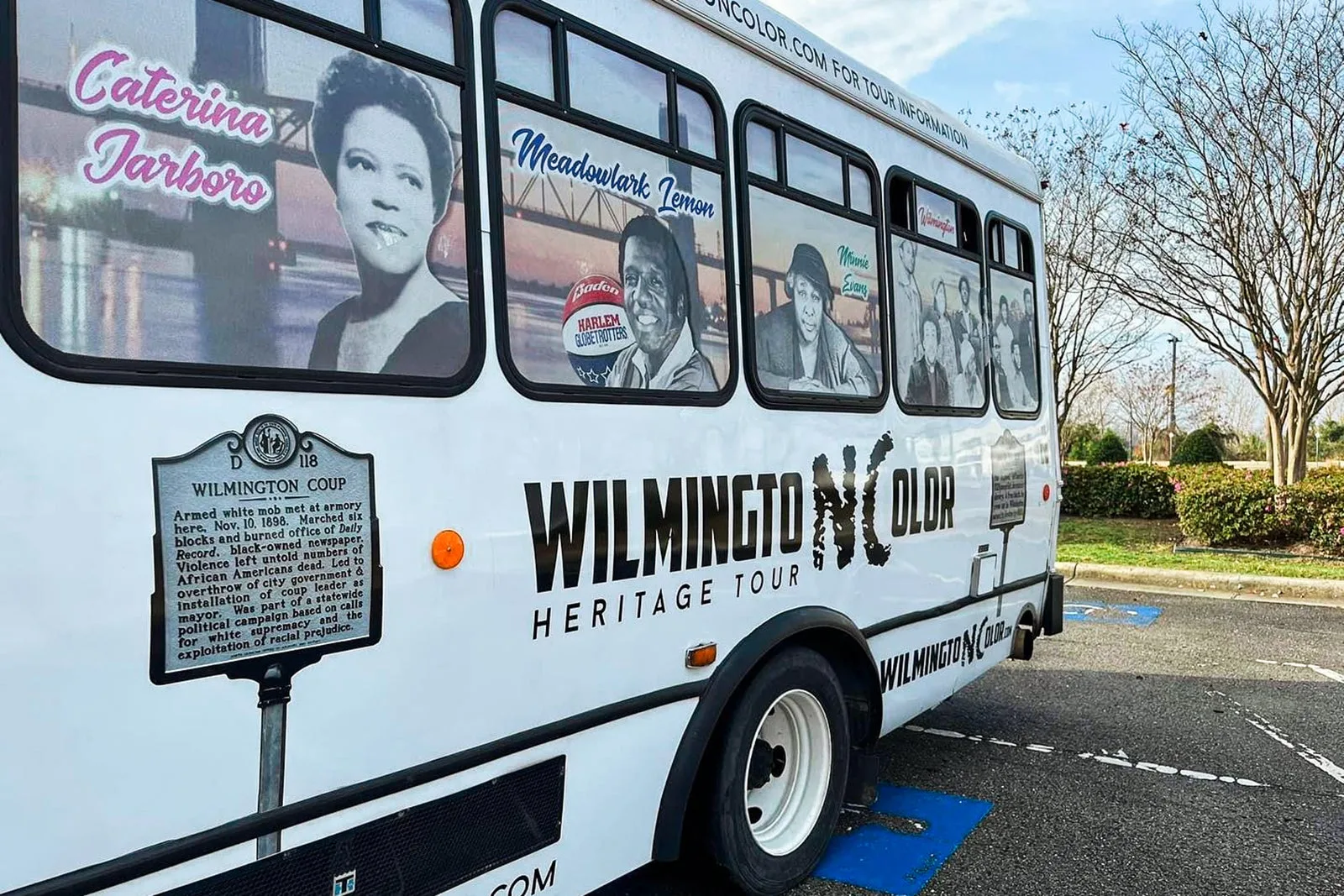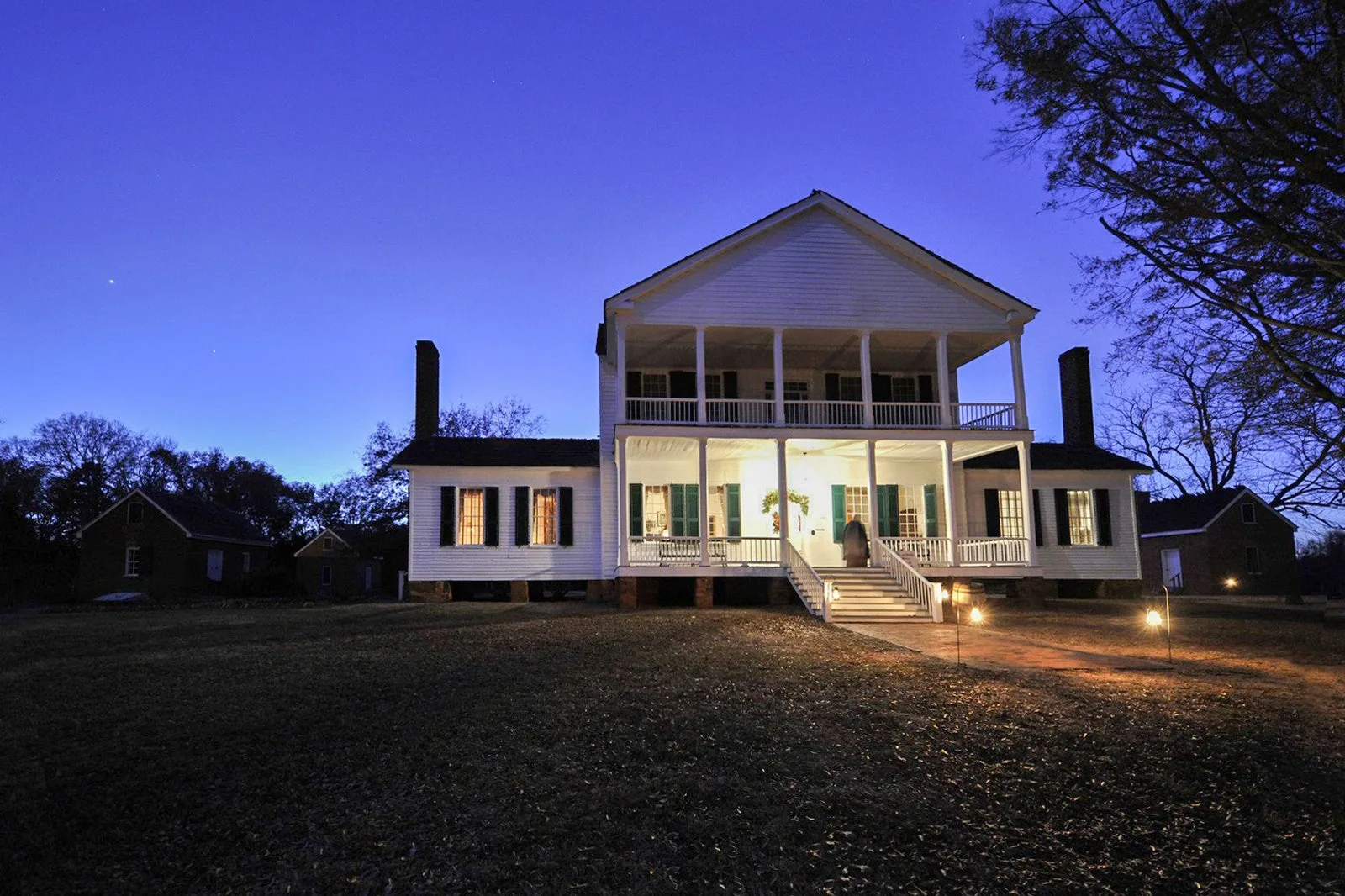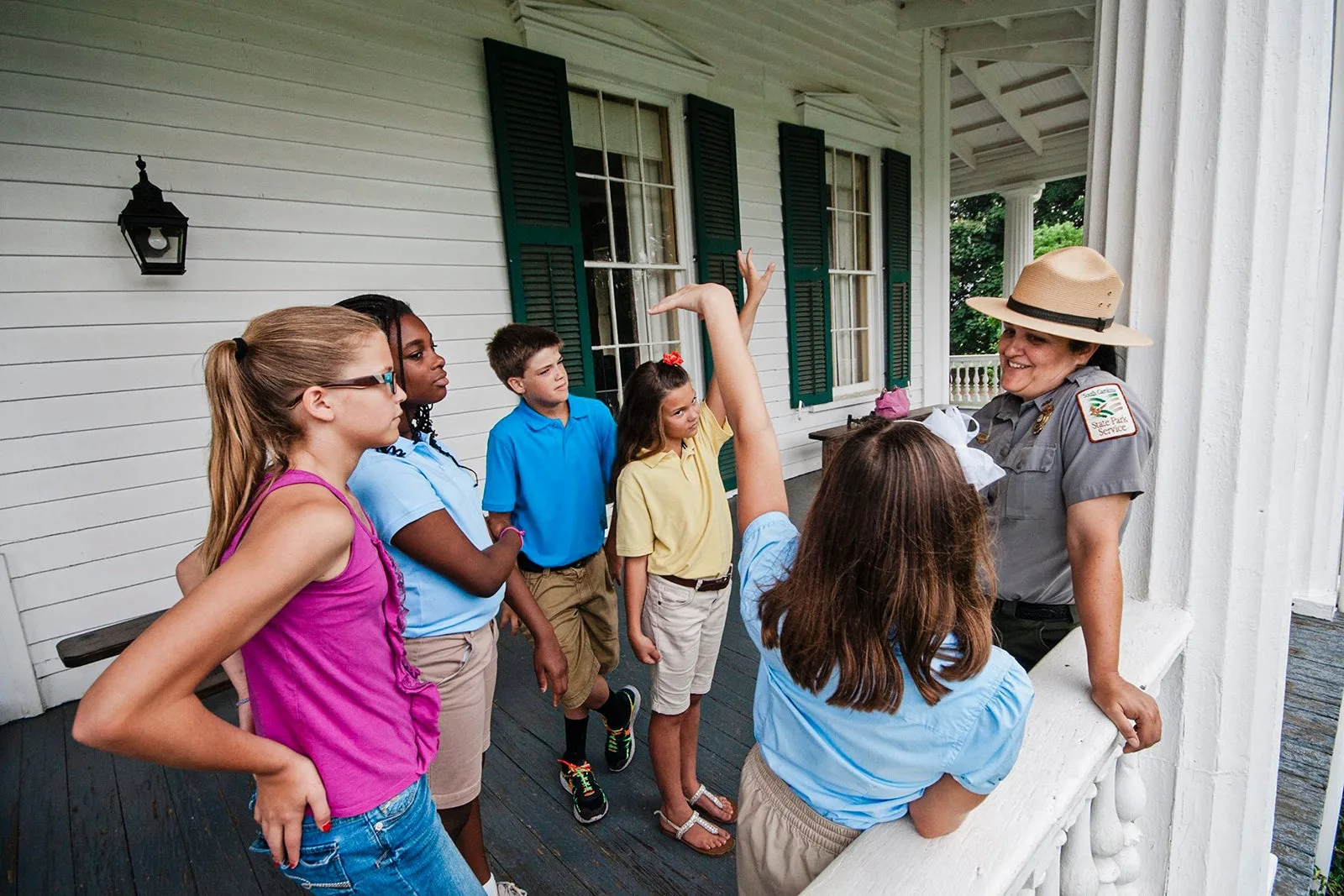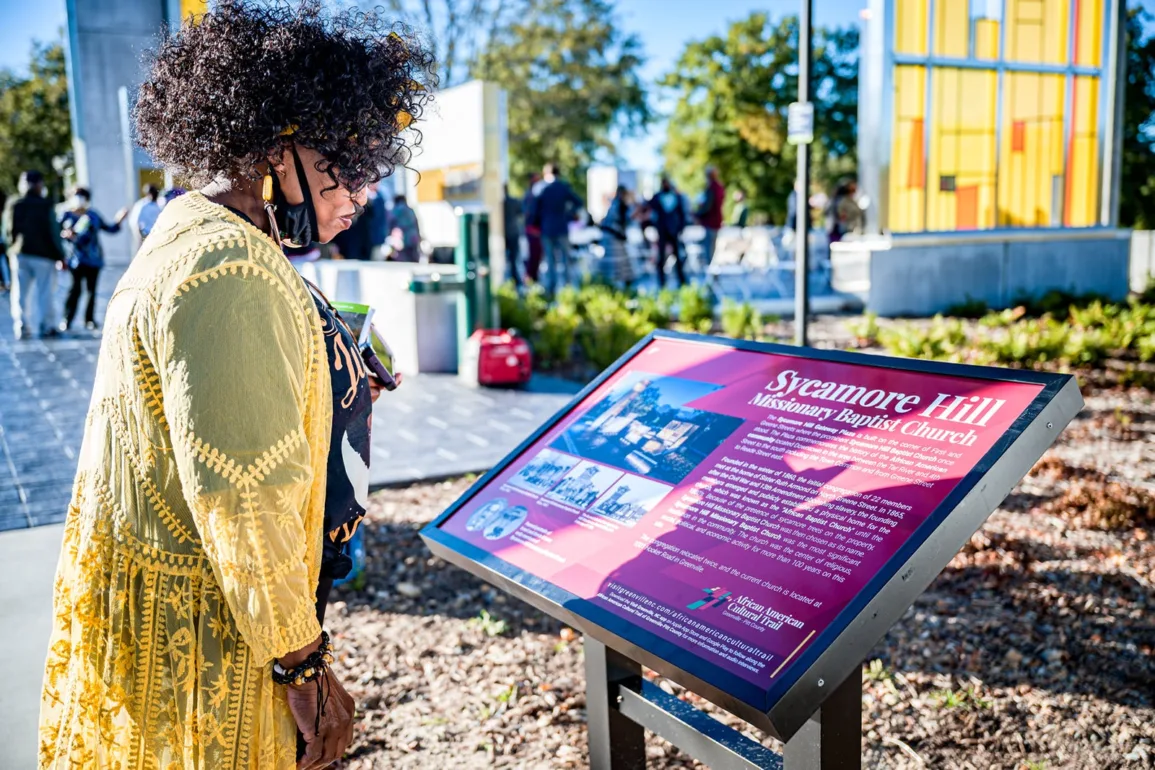Road trips haven’t always been my preferred means of travel, but as I have leaned into slow travel over the past few months, I’ve begun to appreciate the freedom, depth and natural beauty that exploring by car can afford.
Each February during Black History Month, Americans commemorate Black achievements and historical challenges — contributions that should be honored and celebrated in destinations across the country throughout the year.
My own personal road trips, of late, have led me to some beautiful destinations throughout the South where I have learned more about Black history, culture and untold stories of our ancestors.
While I didn’t follow any particular route from state to state or city to city, here are some of my favored stops for exploration (and a few that are next on my list).
Black history in the Tar Heel State
Greenville
My hometown, Greenville, is ground zero for exploring Black history in North Carolina.
Though small, the African American Cultural Trail is an impactful journey through the city. Even as a person who grew up here, I learned a lot from visiting the sites that preceded the Sycamore Hill Gateway Plaza. This site marks the original location of one of the state’s most prominent Black churches, Sycamore Hill Missionary Baptist Church, founded in 1860 with just 22 members. The church is still open today.
Greenville is known for two things, one of which is its healthcare system. This cultural trail acknowledges the contributions of Black healthcare professionals. In 1923, resident Frances Hopkins, a nurse, began to care for Black patients in her home. With the help of the Greenville Kiwanis Club, the St. Frances Hospital for Colored People was opened the following year.
The other thing the city is known for is its college, East Carolina University, formerly known as East Carolina College. On the cultural trail, you’ll wander through the arts district and learn about the work and life of Johnny Wooten, who used entertainment to pioneer desegregation on campus.
“The Block” was a hub for Black entertainment and culture in its heyday. The stretch of businesses along Albemarle Avenue was home to The Roxy Theater, barbershops and restaurants. Some of these, like Bell’s Restaurant, were listed in The Green Book — a guidebook for Black roadtrippers. The Roxy is still an operating performing arts center. As you tour the area, stop at the best spot in town, The Breakfast Bar, for a delicious breakfast or brunch.




Daily Newsletter
Reward your inbox with the TPG Daily newsletter
Join over 700,000 readers for breaking news, in-depth guides and exclusive deals from TPG’s experts
There were 327 business listings in The Green Book for North Carolina — 66 of the buildings are still standing, some of them operational, including Dove & Son’s Auto Services in Kinston and Greensboro’s Historic Magnolia House, a hotel that played host to legends such as Ella Fitzgerald, Jackie Robinson and Tina Turner.
Wilmington


If you only have time for one thing in Wilmington, North Carolina, it should be the WilmingtoNColor tour. The shuttle bus will take you through Green Book locations (like the Murphy Hotel), influential Black-owned businesses, prominent educational institutions and monumental medical facilities. Most importantly, it tells the story of the only successful government overthrow on American soil, which occurred as a result of a racially charged massacre in November 1898 that demolished Wilmington’s robust Black community.
Astonishingly, at the time, more than 100 elected government roles (lawyers, city clerks, treasurers and more) were held by Black residents. Following the massacre, over 100,000 registered Black voters left Wilmington, and every Black person serving in an elected government role was forced to relinquish their duties. It was more than 75 years before another Black person served in public office. The tour does a stellar job of identifying the effects of the massacre and coup through the years.
Durham


North Carolina’s Research Triangle area is synonymous with invention, ingenuity and innovation and is rich with Black history. In the Triangle, you’ll find the city of Durham, home to the beloved North Carolina Central University, a historically Black university. Founded to provide Black people with educational opportunities after the Civil War, the university was the liberal arts college where Blacks were state-supported in the U.S. You can ride through the campus or schedule a tour with the administration staff.
It was in Durham’s Black Wall Street district that John Merrick founded the North Carolina Mutual Life Insurance Company in 1889, the largest and longest-standing Black-owned life insurance company in the country. In 1907, the district also became home to Mechanics & Farmers Bank, the second-oldest minority-owned bank in the nation — it’s still in operation over 100 years later.
Many civil rights leaders passed through the Triangle area, including Rev. Martin Luther King Jr., who visited five times. However, every city has its formidable group of activists and leaders who brought change.
For Durham, one of those leaders was Pauli Murray, an advocate of racial and gender equality and the first woman ordained as a priest at the Episcopal Church. Immortalized in several murals across the city, she was the first Black person to become a Doctor of the Science of Laws from Yale Law School and was a part of movements in Virginia to end segregation of public transportation. She was also one of the founding members of the Congress of Racial Equality, which taught and used nonviolent tactics in protests.
Murray made an indelible impact on every community she was a part of. Her childhood home is a National Historic Landmark and now operates as the Pauli Murray Center for History and Social Justice. It’s one of the most inspiring places to spend an afternoon in Durham.
Asheville


On the Western side of the state is Asheville. Travelers flock here for the breathtaking mountain views and lively breweries, but you’ll find plenty of Black influence here, too, starting with the Biltmore. Whatever you need for the ultimate staycation or getaway can be found on-site. At over 125,000 acres, the estate, built by the Vanderbilt family, was one of the largest private estates in the county. To amass that many acres, the Vanderbilts purchased acres from Black landowners in the Shiloh community who primarily used the land for farming.
Over the years, the Biltmore became a household name for entertainment and hosting, with many Black celebrities among the guests. Poet Langston Hughes wrote about his stay in his autobiography, The Big Sea, after his visit in 1931. In 1941, Marian Anderson sang in the estate’s banquet hall for more than 2,500 people. Another singer, Ethel Waters, visited in 1956 and performed at a benefit concert for the United Negro College Fund.
You can also tour the property to marvel at its grand architecture and charm. It is one of North Carolina’s treasures. However, I wish the tours did more to highlight the Black celebrities and politicians who visited the estate.
There’s plenty more to explore and learn in Asheville, and the city’s architecture is the main attraction. James Vester Miller is the master brick mason behind many of Asheville’s historic buildings from the late 19th century until the early 20th century.
On a self-guided walking tour curated by Andrea Clark, Miller’s granddaughter, you can marvel at a slew of impressive buildings like the Asheville Municipal Building, Mount Zion Missionary Baptist Church, Scottish Rite Cathedral and Masonic Temple, and Hopkins Chapel AME Zion Church.
Another self-guided option is the Asheville Black Heritage Cultural Trail. It connects you to stories of unsung heroes and landmarks throughout the city. If you’re staying at The Foundry Hotel (a Black-owned hotel in the center of Asheville’s oldest African American business district), there are trail markers just outside the door. For a guided experience, DeWayne Barton is the go-to person for authentic narratives of the Black Ashevillians who lived and worked on The Block.
Black history in the Palmetto State
Rock Hill


My adventure in Black history in the Palmetto State started in the Olde English District, which spans seven counties. The first stop was Rock Hill, South Carolina.
Like many other communities, Rock Hill also had a Black Wall Street. This community was home to Black-owned businesses like churches, hair salons, grocery stores and restaurants. At the corner of Black Street and Dave Lyle Boulevard lies the African-American Business District, a monument that pays homage to the businesses that once were.
In a 1-mile radius is The Mural Mile, where art, history and freedom of expression meet. There are a total of 10 murals painted on the sides of buildings by local artists. Some of the murals reinforce the spirit of community with a reminder that Rock Hill is for everyone. Others share the importance of being a dreamer. I couldn’t pick a favorite. The artists are wildly talented.
Brattonsville


Throughout the South, you’ll find that plantations have been turned into wedding spaces and event venues, romanticizing the property and leaving out the sordid truth that happened to enslaved people on those grounds. So, ordinarily, I do not recommend plantation tours or visit them myself.
However, I find Historic Brattonsville in York County to be one of the exceptions. You won’t find any glorification of the past here, only a commitment to telling the stories of enslaved people forced to call this land home, such as the “seven sacred families” whose lineage can be traced to Brattonsville.
I had the privilege of meeting one of those people, Wali Cathcart. His great-grandmother Lila was one of many enslaved here. Cathcart is a local historian involved in community education at Brattonsville; he also was a pitcher for the Joe Black National All-Stars, a Negro Baseball League team, in 1959.
The property sits on 800 acres with more than 30 buildings listed on the National Register of Historic Places. Of those buildings, there are two original structures on the plantation, one of which is former slave quarters. As you tour the inside of this small structure, you can still see the fingerprints of the slaves who built it, another reminder of the stark difference between the day-to-day lives of the enslaved and their enslaver.
Brattonsville was also a battlefield site in the Revolutionary War, and you can experience reenactments throughout the year. One of the things I value the most about this tour is learning about the living history programs used to educate the public on life in the Carolina backcountry from the 1750s to the 1850s. It is among the few living history sites with African American interpretation.
Rose Hill Plantation State Historic Site


Another site that does an excellent job at preservation and education is the Rose Hill Plantation State Historic Site. It is the home of former Gov. William Henry Gist, leader of South Carolina’s secession movement.
At about 2,000 acres, the plantation had the second-largest enslaved population in Union County, South Carolina, and was an active plantation for 125 years. Five original and historic buildings are still standing, including the Gist Mansion.
Tour guides are very knowledgeable in sharing what day-to-day life might have been like for the Gist family, the enslaved people, the free people of color and the sharecroppers who lived there. The rooms have period furnishings, decor and table settings. It’s one thing to read about history or see pictures, but structures like this put you face-to-face with reality in a jarring way. I think that component is needed to truly reinforce the horrors Africans and African Americans contended with in this era.
I spent the most time in one of the rooms downstairs, which might have been a sitting room or smaller bedroom. I was intrigued by two things in this room. Although they shared the stories of the enslaved and free people, the tour guide pointed out that the 1860 census did not list the names of any occupants outside of the family. Instead, it vaguely listed age and gender.
The other thing that held my interest was the labor contracts from 1865-1866. Essentially, labor contracts were documents between formerly enslaved persons and their previous enslavers. They outlined things such as their work and wages. However, many of the formerly enslaved could not read, so the contracts were not to their benefit in any way. It was disheartening but a reminder that even in gaining freedom, Black people often were not treated fairly.
An African American cemetery with more than 200 headstones was discovered a little over three years ago a few miles from the historic site in the Sumter National Forest. While little information is currently available, the state plans to have the space identified and made accessible.
Tours of the area are insightful and can be the catalyst for conversations about race relations and injustices, but know that it can be emotionally taxing. Whether you visit the site alone or with someone, spend some time along the Tyger River or one of the walking trails to decompress.
Continuing the journey
These cities and sites are part of a bigger story of Black history in North Carolina, South Carolina and America.
Each state offers tours and information that celebrate the uniqueness of Black history. Check out the North Carolina Department of Natural and Cultural Resources and the South Carolina Department of Parks, Recreation and Tourism websites for more places to add to your cultural road trip through the Carolinas.
The Green Book of South Carolina features several hundred sites specific to Black heritage throughout the state.
Related reading:



